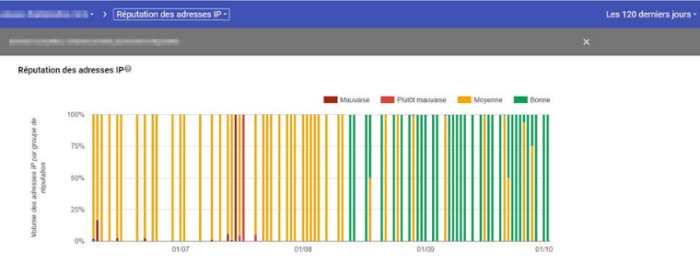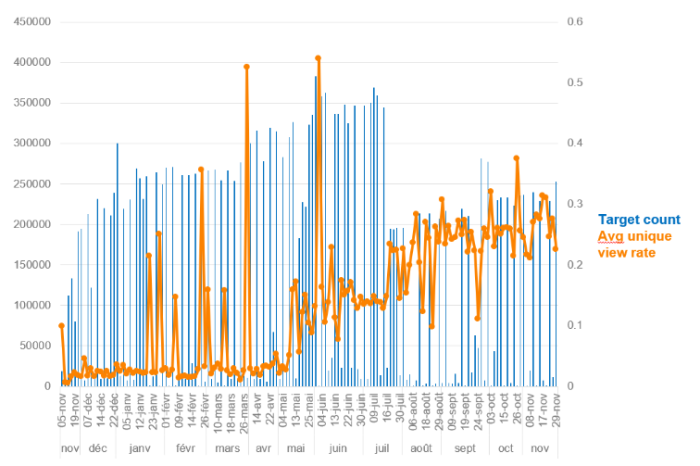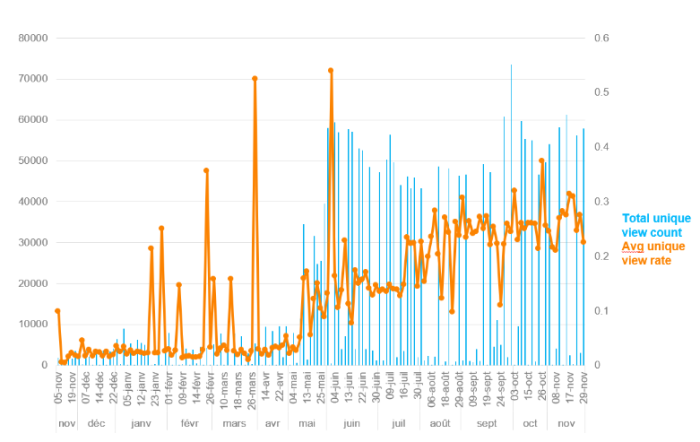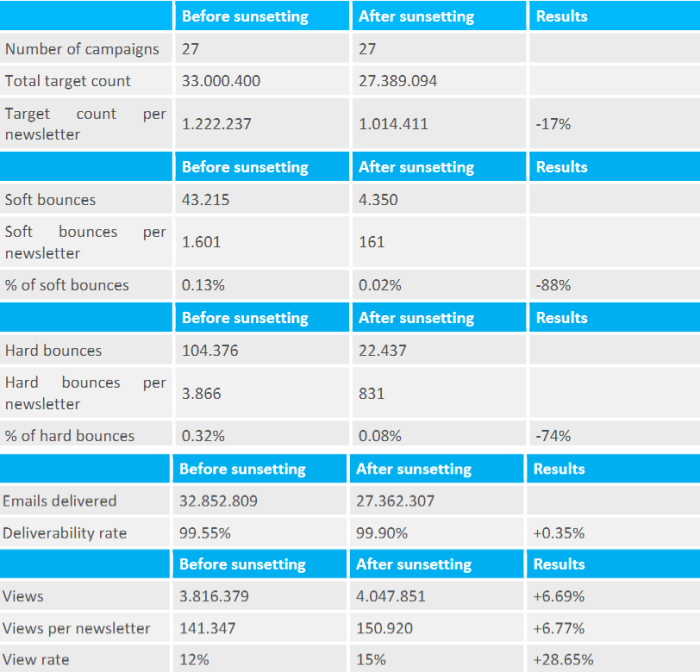Introduction
Over time, data will be subject to ROT: Redundant, Obsolete or Trivial, i.e.: no longer accurate or no longer in use. It might be outdated information that has been replaced. In the case of Audience Lists, this means contacts that have become inactive over time.
If these inactive records are not addressed, the Audience List will begin to weigh down campaign results, consuming valuable resources with no returns and potentially reducing reputation - resulting in a negative impact which ultimately means your active contacts suffer.
This situation can be addressed with practicing good data hygiene: regularly reviewing and cleaning up of Audience Lists, similar to spring cleaning. We refer to this as "Sunsetting": the sun rises and falls every day but gradually, so reviews should be performed little and often, and should be considered a continuous process - it is not a one-off cleanup (like email insights).
How to sunset
Review contact lists and identify those that show no signs of activity for a certain period of time (e.g. 3 months).
Then :
-
either resend these users a reactivation email asking if they're still interested in communications, then opt-out recipients that don't respond after a predefined period of time (e.g. 7 days)
-
consider reviewing and changing practices (frequency / content / subject / channel) for this segment to see if that re-engages them
Why would you do it?
Inactive users can potentially harm your email program by having a negative impact on your overall reputation by:
- Deleting emails without opening them
- Moving emails into the spam folder
- Marking emails as spam
- Being turned into spamtraps
- Becoming dead accounts
Additionally, having a large amount of inactive users will lower the overall percentage of active users. Providers see a low percentage of activity as a bad sign and will again lower your reputation score.
Sunsetting will help you reduce the number of inactive users which, let’s face it, are mostly dead weight. This will lower the number of:
- unopened deleted mails
- mails moved to the spam folder
- spam marking
- the overall percentage of inactive users when facing providers
- time it takes for emails to reach the mailbox
Sunsetting will also help you get rid of any spamtraps which might have entered your lists over time.
Spamtraps might get into your lists in 3 ways:
- Recycled spamtraps: These are addresses that haven’t been in use for quite a long time. Providers might choose to convert these addresses into spamtraps to catch senders which have bad list hygiene practices.
- Typo traps: Spam traps which got into your list due to typos that are made during the signup process.
- Pristine traps: Spamtraps which never actually belonged to a human being. These addresses were created for the sole purpose of catching senders who are sending email to addresses which never gave their consent.
Spamtraps can cause a serious reputation issue, resulting in spam folder placement and even blacklistings, so it’s important to get rid of these as soon as possible. The only problem is that these spamtraps are unidentifiable in your user list. The only way to get rid of them is by applying sunsetting as these addresses normally never interact with emails. They will not open emails or click on links. By getting rid of inactive users you are also getting rid of spamtraps.
In short, applying sunsetting to your user list will:
* improve your overall reputation
* improve inbox placement
* generate more opens and clicks
* improve campaign results
* increase revenue
It will also greatly help to avoid certain issues, like spam box placement and blacklists.
Use case: Retail - Jewelry store
One of our clients in the retailing business, more specifically selling jewelry, came to use with some serious deliverability issues:•
- Low open rates (< 3%)
- Bad domain reputation
- Emails being sent to the spam folder
....
After some analysis we found out the customer had a lot of inactive subscribers in their user list, so we made a couple of suggestions:
- Separate transactional traffic from bulk traffic
- Use dedicated subdomains for each email stream
- And most importantly: only target users which had recently shown activity
After some time, results started improving greatly:
Their IP reputation improved significantly:
As did their domain reputation:
And as a result, their open rates increased massively:
Use case: Retail - Kids Clothes
This customer, a retailer specializing in kids clothes, had the following issues:
- A consistent drop in all email KPIs over several months
- Very high marketing pressure
- Lots of complaints
- Regular blacklistings
- Emails going into the spam folder
We advised the client to build different segments based on user activity:
- Segment 1: actives and users who had been inactive for 3 to 6 months
- Segment 2: users who have been inactive for 6 to 12 months
- Segment 3: users who have been inactive for over a year
They then lowered the email frequency for the inactive segments (S2 and S3).
After 3 months, these were the results:
- On average 220.000 emails were sent less per newsletter campaign
- The unique view count increase by on average 10.000 per newsletter
Conclusion
As the previous use cases indicated, sunsetting might seem quite drastic, but it really improves your results in the end. As your reputation metrics improve, so will your open rates and view rates, which will results in more revenue for your company. In this case, less really is more.
Rebuilding reputation takes time. If you choose to apply sunsetting to your email program, don’t expect everything to be fixed within a week. Sadly, there is just no quick fix when dealing with reputation related issues. Depending on what this issues are, it might take weeks or even months to see results, but in the end it will be worth it.





